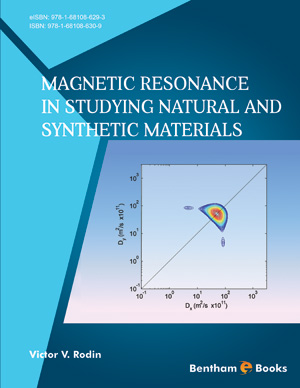Abstract
This chapter considers how 1H DQF NMR spectroscopy characterises hydrated cement pastes. The increase of the DQF NMR signal during cement hydration has been observed. The mobile single-quantum (SQ) signal was decreasing with increasing hydration time. The measured DQF NMR signal in hydrated white cement has been fitted by a sum of two components. The protons of Ca(OH)2 were responsible for the appearance of the first component. The second component was associated with the protons of water in the planar C–S–H gel pores. A model of water molecules movement near the centres of paramagnetic impurities has been considered. The model was consistent with the level of paramagnetic iron content and experimental data. The DQF spectra in grey cement pastes have been fitted by a sum of three components. First two components in grey cement were considered similar to white cement. The iron-rich phases in grey cements were responsible for an appearance of third component. The experiments with progressively heating cements showed how water leaves from cement sample and how the DQF signals of all components changed with removing water. The behaviour of the DQF signal as function of relative sample mass was in sympathy with bound component of the solid echo experiment. It was discovered that the DQF component assigned to the C–S–H water decreases monotonically, while that associated with the solid Ca(OH)2 first increases before decreasing.
Keywords: Ca(OH)2, Creation time, Double-quantum-filter (DQF) NMR, Evolution time, Fourier transform (FT), Free induction decay (FID), Iron content, NMR spectra, Residual dipolar interaction (RDI), Spin-lattice relaxation time T1, Spin-spin relaxation time T2, White and grey cement pastes, Water.






















